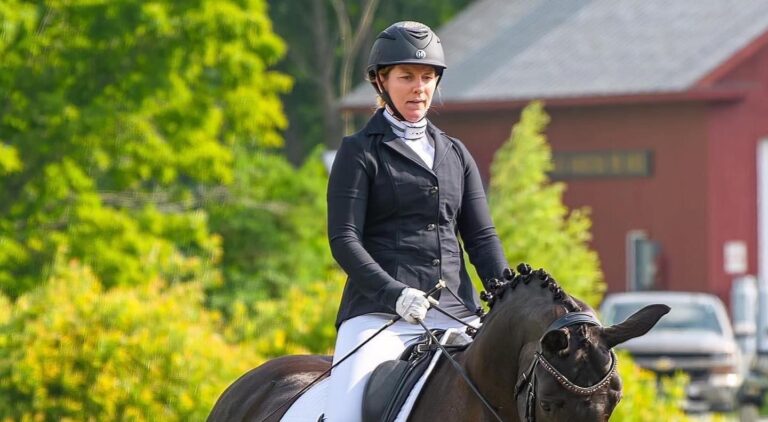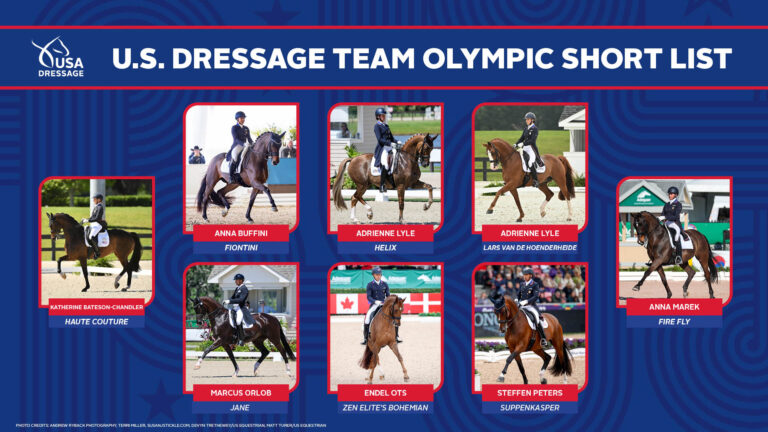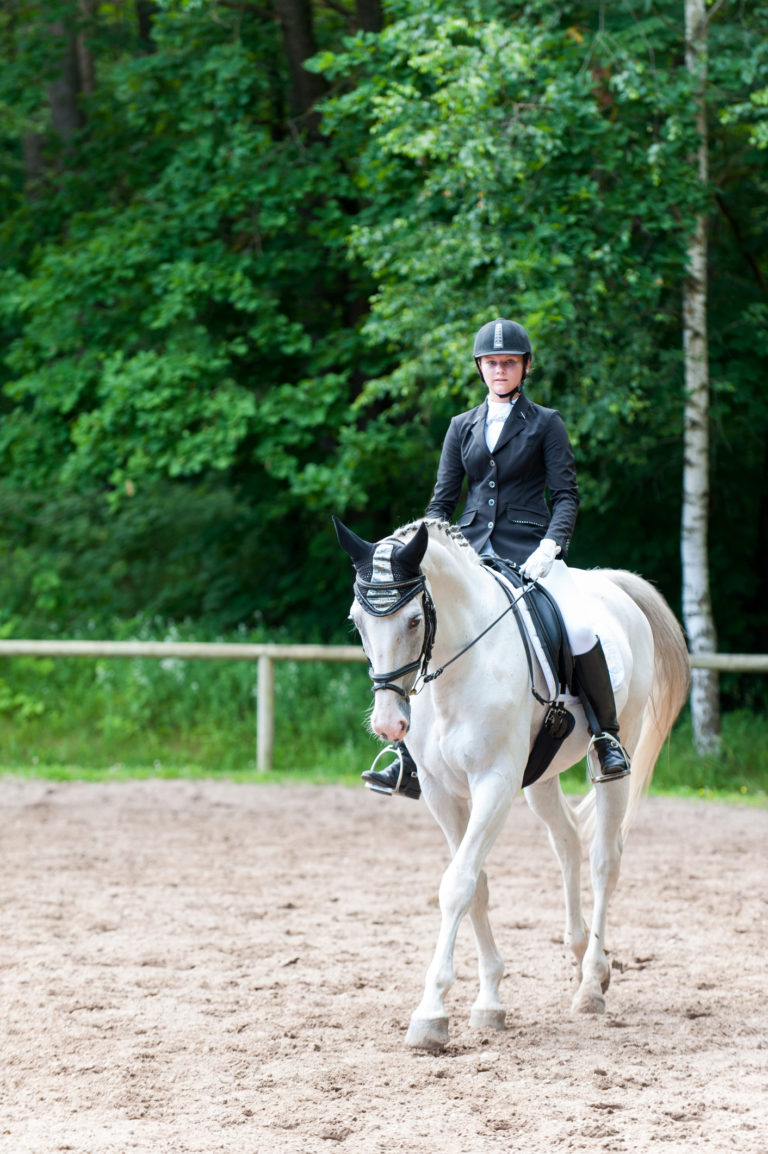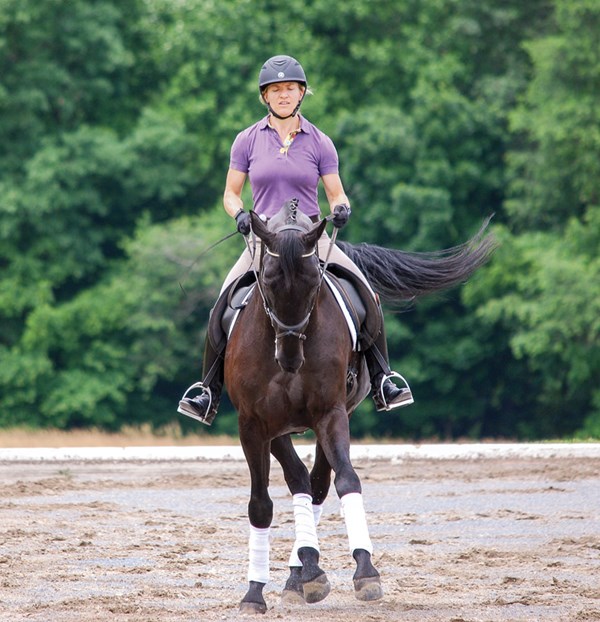Q: What is the best way to ride a transition from a medium trot to a working or collected trot? I feel my down transitions require too much of my rein aids and I am unsure if this is correct. How do I know my down transition is going well?
—Alice Hayman of Arlington, Texas
A: Riding transitions can be a great way to develop throughness in your horse, improving balance, suppleness and impulsion. Transitions are a good indicator of a horse’s willingness and confidence in the rider’s timing. This is why in dressage tests, they are often given a score of their own.
Begin developing the quality in your transitions with smaller changes, such as transitions between working trot to lengthened trot, walk–trot, trot–canter, canter–trot, rein back to walk, etc., and work on making them as smooth and balanced as possible. Watch for indications of loss of balance and engagement. Signs of losing the balance are loss of rhythm, quickening of the tempo, stiffening of the topline, the poll dropping too low (nose behind vertical), an inverted topline and the horse being above bit, leaning onto your hands, losing alignment and becoming difficult to sit, especially in medium and extended trots. Your horse should feel like a rubber band, able to lengthen and shorten without resistance.
When you feel that you have lost balance, use half halts. Close your legs and push your horse’s energy uphill into a steady contact to rebalance the hindquarters under your seat into a carrying position. The more pushing power from the hind legs you have, the more care you must take that your horse stays under you with his hind legs. He must not travel out behind or wide behind like a wheelbarrow, down in front. Think of riding the hind legs forward through a supple topline into the contact as opposed to pulling back.
Lateral exercises can help engage the hind legs. For example, ride a shoulder-in followed by a transition from medium trot on a 20-meter circle. Then transition to collected trot, using the bend to engage the inside hind leg. Or ride a leg yield from the centerline to the wall followed by a lengthening or medium trot, riding into your corners before and after the lengthening or medium trot.
At first, your horse might feel like a three-speed bicycle moving in a simple walk, trot or canter. Your goal is to add more and more gears in each gait. Once you have smooth, steady transitions in smaller changes of the gaits, gradually add more impulsion, extension and collection—such as collected to working trot or working trot to lengthened trot—adding more paces to the gaits. The more gears in each gait you have, the more nuanced and smooth your transitions become and the more in control you become.
Your horse must be extremely responsive to your aids to add more paces or gears to your gaits and improve your transitions and your aids must be clear. He must react to your leg aids without delay, and listen to your seat for tempo, and your position must be stable enough to feel how balanced he is underneath you. Your legs send your horse’s hind legs’ power toward your hand and your position regulates how much goes through—too much will run against your steady contact (e.g., the horse feels heavy in the contact), too little and your horse will be behind you (behind your driving aids). The swing of your hips can dictate how long or short of a stride you want if your horse’s back is supple and swinging.
Always make sure to maintain balance (e.g., your horse should stay smoothly under you, not get behind your aids or run through your reins), suppleness, straightness and clear control of the tempo of each gait through your position. Use half halts to achieve this and develop your feel for how much driving or holding is needed at any given moment to balance the energy you have in your horse. Remember, riding is not static: Your horse keeps changing, and you have to develop a feel for balance and react accordingly to shape the power into what you want in an elastic, smooth way.
Last but not least, ride millions (billions) of smaller sub-transitions to maintain balance. The more transitions you ride, the more through, elastic and changeable your horse will become. Remember, in a transition from medium to collected trot, there are many sub-transitions in just that one transition. Those sub-transitions are your half halts and they vary in the mixture of driving and holding through.
All the elements of the Training Scale are incorporated in good transitions—rhythm, suppleness and relaxation, contact, impulsion, straightness and collection. Use the guidelines of the Training Scale to gradually develop your horse’s transitions and your transition from medium trot to collected trot will undoubtedly improve.

Lisa Pierson is a USDF Certified Instructor through Fourth Level, a USDF bronze, silver and gold medalist, a USDF “L” Education Program graduate and has won several Regional Championships and Reserve Championships in USDF Regions 2 and 8. She is also a NEDA Flextime Instructor. Based in Brewster, New York, she operates Pleasant View Farm (LisaPiersonDressage.com).











